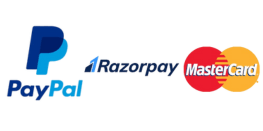
K-12 Online Education Market Research Report Analysis by Grade (Kindergarten, Elementary, Middle School and High School), Platform (Gamification, Mobile, Tablet, Laptops/Chrome Books and Others), Big Data & Analytics (LMS/ Virtual Learning Environments and Others), End User (Cloud and On-Premises) and Region, Size, Share, Trends, COVID-19 Impact & Growth Forecast to 2030
Pages: 120 | April-2024 Formats | PDF | Category: Information and Technology| Delivery: 24 to 72 Hours
K-12 Online Education Market overview
K-12 Online Education Market is expected to grow rapidly at a 32.5% CAGR consequently, it will grow from its existing size of from $ 107.50 Billion in 2023 to $ 755.1 Billion by 2030.
For Insights Consultancy presents an extensive market analysis report titled “K-12 Online Education Market Report 2024″providing businesses with an edge in competition by providing a thorough analysis of market structures with estimates for various segmentations and segments. The report also focuses new trends, major drivers, challenges, as well as opportunities. The report provides all necessary information needed to thrive in the K-12 Online Education industry.
This report is about K-12 Online Education market research provides a complete analysis, which includes a comprehensive analysis of the current and future trends in the market. The K12 online education market has seen substantial growth and development over the last few years. Technology advancements have led to expanding access to the internet online education has grown into an increasingly popular option to classroom instruction for K12 students around the world.
The major players in the market include established companies in the field of education technology and startups with new online learning platforms and tools. These platforms offer a vast selection of resources and courses that are adapted to different grade levels subject areas, as well as learning style. The COVID-19 pandemic also led to the rapid adoption of online learning, because schools were forced to move towards remote learning to maintain the quality of education. This drastic shift in the direction of education highlighted the importance of a strong online education equipment and infrastructure, resulting in investments and innovations on this K12 educational market. Initiatives by the government to promote digital literacy and closing that digital gap have led to the expansion in the market.
In addition, students and parents are becoming more aware of the convenience and personal learning possibilities offered through online education, thereby increasing its use. In the near future looking ahead, the K12 market for online education is set to continue growing due to advancements in technology and the demand for more flexible learning solutions and continuous efforts to increase accessibility and affordability, influencing its future.
Get Free Sample Copy- https://forinsightsconsultancy.com/reports/request-a-sample-k-12-online-education-market
K-12 Online Education Market Segment Analysis
By Grade
-
Elementary education (K-5): Focuses on literacy as well as numeracy and fundamental skills. The primary features are games, interactive lessons, and visual aids that help young students.
-
Middle School (6-8): Covers additional subject areas, with an the emphasis on problem-solving and critical thinking. Online platforms can provide interactive content, like virtual science labs as well as collaboration tools.
-
High School (9-12): Offers an extensive curriculum with advanced placement (AP) courses as well as specialized electives and the preparation required for entrance to college tests. Platforms usually incorporate test prep tools, tutoring via virtual technology and individualized learning pathways.
By Platform Type
-
Standalone online schools Virtual schools that provide a complete K-12 program. These schools typically provide accredited instructors, educational counseling and features for tracking students. For instance, K12 Inc. and Connections Academy.
-
Additional Platforms are designed to enhance the traditional classroom experience. They provide tutoring, enrichment classes as well as homework assistance usually focusing on particular areas or skills such as programming or math (e.g., Khan Academy, Outschool).
-
Hybrid Learning Platforms The platforms integrate online education and classroom instruction in person. These platforms are able to allow blended learning that many traditional schools are implementing post-pandemic.
By End-User
-
Public as well as Private Schools Numerous schools make use of online platforms to supplement their teaching remote learning, remote learning, or in hybrid formats.
-
Personal Students Families who homeschool and students who are independent increasingly depend on the internet for education to provide better learning experiences that are more personalized.
-
tutoring centers Numerous tutoring centers are using online platforms to increase the size of their offerings and connect with more students.
By Technology
-
Learning Management Systems (LMS) Platforms such as Google Classroom, Schoology, and Canvas offer students and schools with tools for managing courses, track progress and even submit assignments.
-
AI-powered Tools Tools such as the software for adaptive learning (DreamBox, Smart Sparrow) and AI tutors help students to achieve personalized learning by altering the content according to individual student performance.
-
Gaming and virtual learning environments Platforms such as Roblox Education and Minecraft Education employ gamification to help make learning more enjoyable.
-
VR/AR solutions Augmented and virtual-reality tools are being increasingly used in K-12 education to provide an immersive experience in learning, especially in the fields of science, history and geography.
K-12 Online Education Market Trends 2024
Individualized learning: The internet’s educational platforms are increasing using personalized learning algorithms and adaptive technology to adapt instruction to each student’s demands. This trend is likely to continue growing as educators begin to recognize the benefits of personalization in learning to improve student performance.
Augmented Reality (AR) and Virtual Reality (VR) Integration: AR and VR technologies are integrated into online educational platforms to deliver an immersive experience for learning. The technology allows students to interact with digital media in a more enjoyable and interactive way, which improves their understanding of the concepts they are learning. Gamification: Gamification strategies like badges, leaderboards, or rewards, are used to inspire students and boost the amount of time they spend online learning. Gamified learning experiences can make education more enjoyable, and could help students retain more content.
Microlearning: Bite-sized, short lessons, also known as microlearning, are becoming popular in the K12 online education market. Microlearning courses are designed to provide information in small pieces that make it simpler for students to take in and retain knowledge, particularly in learning environments that are remote. Social Learning Communities The online education platforms have created social learning communities in which students can work together, share information and learn from one with one another. These communities give students the feeling of belonging as well as help, which can enhance the online learning experience overall. In general all, the K12 market for online education in 2024 will be driven by new methods and technologies designed to increase the student’s engagement, results and access to remote and hybrid learning environments.
K-12 Online Education Market Dynamics 2024
Growth Drivers
Technological Innovations: Continuous advances in technology, like better connectivity to the internet artificial intelligence, cloud computing as well as interactive media tools improve the efficiency and availability of internet-based educational platforms. A growing demand for flexible Learning Solutions: Parents, teachers, and students are becoming more aware of the advantages of flexible learning solutions provided by online education.
These include personalized instruction, self-paced learning as well as the possibility of accessing education content anywhere and anytime. COVID-19 COVID-19 pandemic has increased the use of online learning as schools across the globe were forced to move to remote learning in order to maintain continuity in education. The rapid growth of online education has resulted in an increase in infrastructure for online education as well as tools.
The Government’s Support for Initiatives and Assistance: Governments all over all over the world invest in digital infrastructure and encouraging initiatives for online education that aim to increase digital literacy, reduce the digital divide and increase access to high-quality education, particularly for underserved communities.
Growing Education Costs The increasing costs of traditional education, such as tuition, transportation costs, and textbooks, is driving parents and students to look for cheaper alternatives like online education that can be affordable and more accessible.
Restraints:
Ungleich access to Technology Accessibility: Different levels of access to technology, such as the latest devices as well as high speed internet connections could hinder the use for online learning, especially in low-income and rural areas in areas where infrastructure might be weak. Quality of Instruction and Online Content Quality of Instruction and Content instructional content and online instruction is a major challenge since not all online courses and platforms adhere to rigorous standards for education or employ effective pedagogical methods.
Digital Divide Digital Divide: The digital divide that refers to the disparity between people who have access to technology via digital and those who don’t is a major obstacle to the adoption of online education especially for marginalized populations and those in underserved communities.
Technology Barriers: Technical issues such as system issues or compatibility issues, as well as cybersecurity issues, could disrupt the learning experience online and undermine trust in educational online platforms. Engaging and social interaction Online education might not have the interaction opportunities and social interactions offered by traditional classroom environments and can negatively impact students’ motivation, cooperation as well as overall learning outcomes. The solution to these issues will be vital to ensure the continual development and the success in online education. K12 educational market online.
Competitive Landscape of the K-12 Online Education Market
The competitive landscape in the K12 online education market is diversified and ever-changing, with a myriad of companies competing to provide innovative solutions and increase market share. The major players in this market are:
The most well-established Education Technology Companies: Companies like Pearson, McGraw-Hill Education, and Houghton Mifflin Harcourt have a significant position within the K12 online education market, providing extensive online learning tools, content and education solutions.
Online Learning Platforms: Websites such Khan Academy, Coursera for Schools along with Udemy for Business provide online classes and resources for K-12 students, educators, as well as parents. These platforms provide a broad selection of topics and educational materials. They are often complemented with interactive features and assessment. Virtual School Providers Academy and Virtual Schools like K12 Inc., Connections Academy as well as Florida Virtual School, offer completely on-line K12 educational programs. They provide in-person instruction on a live basis, as well as interactive courses as well as support services on digital platforms that cater to students from all grades and across geographical regions.
Learner Management System (LMS) Providers Companies such as Canvas, Schoology, and Google Classroom offer LMS platforms specifically designed to support online learning as well as course management for districts and schools in the K12 age group. These platforms allow educators to design, create and evaluate online courses as well as to communicate with students and parents.
EdTech Startups: A plethora of new startups are launching into the K12 online education market. They offer unique solutions, cutting-edge technologies, and customized learning experiences. They are focused on areas like adaptive learning gaming, augmented reality, gamification and social learning communities.
- Bettermarks
- Scoyo
- Languagenut
- Beness Holding Inc.
- New Oriental Education & Technology
- AMBO
- XUEDA
- Ifdoo
- CDEL and XRS
Top Companies and Recent News (2024-2025)
The online K-12 education market is populated by a mix of well-established companies and innovative startups, with many regional leaders, especially in India.
1. Stride Inc. (formerly K12 Inc.)
Profile: A major player in the online K-12 education space, offering a robust online education model with full-time online schooling options. Stride Inc. is a partner for many online schools, including those using the American curriculum.
News: Stride is focusing on blended learning models tailored to individual student needs and leveraging its platform to offer personalized learning pathways.
2. Byju’s
Profile: An Indian EdTech giant that has expanded its global presence. Byju’s covers the entire K-12 segment, with a focus on math and science, and is known for its innovative video content and personalized learning.
News: Byju’s is reportedly transitioning into what’s being called “Byju’s 3.0,” focusing on sustainable growth, AI-driven personalization, and a more teacher-led learning approach. The company is also consolidating its offerings and investing in rebuilding trust with students and parents.
3. Vedantu
Profile: A leading Indian EdTech startup known for its live, interactive classes and real-time doubt-solving.
News: Vedantu continues to innovate with its proprietary WAVE technology. It is introducing group study models, gamified learning elements, and parent-teacher engagement tools. The company is growing rapidly in the K-12 segment by offering courses mapped to specific school boards.
New Developments
- August 2023 – PowerSchool announced the launch of its learning management system (LMS), Schoology Learning, in the Indian market. Schoology Learning equips K-12 schools with a complete set of tools to boost student performance and empower educators. The solution offers video conferencing and integrated assessment management to improve student performance, foster collaboration, and personalize learning.
- June 2023 – Tata ClassEdge Limited introduced its next-generation digital classroom solution, ClassEdge Platinum (CE Platinum). ClassEdge Platinum is an industry-first, immersive, and collaborative digital classroom platform that allows teachers to build learning experiences for students with the best of technology, content, and pedagogy.
K-12 Online Education Market Regional Outlook
The outlook for the regional K12 educational market differs dramatically across various geographical regions:
North America North America is the dominant K12 marketplace for online learning, fueled by the rapid use of technology that is digital, positive initiatives by the government and a high desire for flexible solutions to learning. In the United States and Canada boast an abundance of online schools and e-learning platform and edtech firms catering to students in K12.
Europe Europe is witnessing an explosive growth rate of the K12 online education market, driven by the growing use of the internet as well as the growing digital literacy and a variety of government policies that support digital education. Countries like Europe, the United Kingdom, Germany, and France have seen massive investments in infrastructure for online learning as well as initiatives to increase access to high-quality education.
Asia Pacific Asia Pacific is a lucrative region in K12 online education that is driven by the rising demand for accessible and affordable education options, especially in emerging economies like China, India, and Southeast Asian countries. Government initiatives to boost digital education, along with the increasing use of smartphones and other devices with internet connectivity have fueled expansion across the region.
Latin America Latin America has seen an increase in the K12 online education market thanks to the growing connectivity to the internet, a rise in smartphones and efforts to reduce education disparities. Countries such as Brazil, Mexico, and Argentina are witnessing the growth in the form of learning online platforms as well as virtual schools that cater to students from K-12. The overall view for the K12 online education market is marked by various levels of adoption and is influenced by factors like technology infrastructure, support from government as well as economic growth and social attitudes toward online learning.
Frequently Asked Questions
What value is the global K-12 online education market expected to touch by 2030?
K-12 Online Education Market is expected to grow rapidly at a 32.5% CAGR consequently, it will grow from its existing size of from $ 107.50 Billion in 2023 to $ 755.1 Billion by 2030.
Which are the driving factors of the K-12 online education market?
Advancement of LMS innovations and expanding request of instruction innovation are the driving factors of the K-12 online education market
Which are the top companies operating in the K-12 online education market?
Ambow Education, CDEL, New Oriental Education and Technology, TAL, Vedantu are the top companies operating in the K-12 online education market.
Report Features
This report gives the most complete information. The report on K-12 Online Education Market format has been designed so that it can provide the best value to the business. It offers crucial insights into the market’s dynamic and will aid in strategic decision-making for current players as well as those looking to join the market.
What Deliverables Will You Get in this Report?
| Key questions this report answers | Relevant contents in the report |
| How big is the sales opportunity? | In-depth analysis of the Global K-12 Online Education Market |
| How lucrative is the future? | Market forecast and trend data and emerging trends |
| Which regions offer the best sales opportunities? | Global, regional and country level historical data and forecasts |
| Which are the most attractive market Key segments? | Market segment analysis and forecast |
| Which are the top Key players and their market positioning? | Competitive landscape analysis, Market share analysis |
| How complex is the business environment? | Porter’s five forces analysis, PEST analysis, Life cycle analysis |
| What are the factors affecting the market? | Drivers & Restraints |
| Will I get the information on my specific requirement? | 10% free customization |
Table of Content
- Introduction
1.1 Market Definition
1.2 Scope of the report
1.3 Study Assumptions
1.4 Base Currency, Base Year, and Forecast Periods
- Research Methodology
2.1 Analysis Design
2.2 Research Phases
2.2.1 Secondary Research
2.2.2 Primary Research
2.2.3 Data Modelling
2.2.4 Expert Validation
2.3 Study Timeline
- Report Overview
3.1 Executive Summary
3.2 Key Inferences
- Market Dynamics
4.1 Impact Analysis
4.1.1 Drivers
4.1.2 Restraints
4.1.3 Opportunities
4.2 Regulatory Environment
4.3 Technology Timeline & Recent Trends
- Competitor Benchmarking Analysis
5.1 Key Player Benchmarking
5.1.1 Market Share Analysis
5.1.2 Products/Service
5.1.3 Regional Presence
5.2 Mergers & Acquisition Landscape
5.3 Joint Ventures & Collaborations
- Market Segmentation
6.1 K-12 Online Education Market, By Grade
6.1.1 Kindergarten, Elementary
6.1.2 Middle School
6.1.3 High school
6.1.4 Market Size Estimations & Forecasts (2023 to 2030)
6.1.5 Y-o-Y Growth Rate Analysis
6.1.6 Market Attractiveness Index
6.2 K-12 Online Education Market, By Platform
6.2.1 Gamification
6.2.2 Big Data & Analytics
6.2.3 LMS / Virtual Learning Environments
6.2.4 Other
6.2.5 Market Size Estimations & Forecasts (2023 to 2030)
6.2.6 Y-o-Y Growth Rate Analysis
6.2.7 Market Attractiveness Index
6.3 K-12 Online Education Market, By Deployment Mode
6.3.1 Cloud
6.3.2 On-Premises
6.3.3 Market Size Estimations & Forecasts (2023 to 2030)
6.3.4 Y-o-Y Growth Rate Analysis
6.3.5 Market Attractiveness Index
- Geographical Landscape
7.1 Global K-12 Online Education Market, by Region
7.2 North America – Market Analysis (2023 to 2030)
7.2.1 By Country
7.2.1.1 USA
7.2.1.2 Canada
7.2.2 By Grade
7.2.3 By Platform
7.2.4 By Deployment Mode
7.3 Europe
7.3.1 By Country
7.3.1.1 UK
7.3.1.2 France
7.3.1.3 Germany
7.3.1.4 Spain
7.3.1.5 Italy
7.3.1.6 Rest of Europe
7.3.2 By Grade
7.3.3 By Platform
7.3.4 By Deployment Mode
7.4 Asia Pacific
7.4.1 By Country
7.4.1.1 China
7.4.1.2 India
7.4.1.3 japan
7.4.1.4 South Korea
7.4.1.5 South East Asia
7.4.1.6 Australia & NZ
7.4.1.7 Rest of Asia-Pacific
7.4.2 By Grade
7.4.3 By Platform
7.4.4 By Deployment Mode
7.5 Latin America
7.5.1 By Country
7.5.1.1 brazil
7.5.1.2 Argentina
7.5.1.3 Mexico
7.5.1.4 Rest of Latin America
7.5.2 By Grade
7.5.3 By Platform
7.5.4 By Deployment Mode
7.6 Middle East and Africa
7.6.1 By Country
7.6.1.1 Middle East
7.6.1.2 Africa
7.6.2 By Grade
7.6.3 By Platform
7.6.4 By Deployment Mode
- Key Player Analysis
8.1 Bettermarks
8.1.1 Business Description
8.1.2 Products/Service
8.1.3 Financials
8.1.4 SWOT Analysis
8.1.5 Recent Developments
8.1.6 Analyst Overview
8.2 Scoyo
8.3 Languagenut
8.4 Beness Holding, Inc
8.5 New Oriental Education & Technology
8.6 AMBO
8.7 XUEDA
8.8 Ifdoo
8.9 CDEL
8.10 X’S
- Market Outlook & Investment Opportunities
- Appendix
List of Tables
Table 1: Market Size and Forecast of K-12 Online Education Market, by Region (USD Billion)
Table 2: Market Size and Forecast of K-12 Online Education Market, by Component (USD Billion)
Table 3: Market Size and Forecast of K-12 Online Education Market, by End-user (USD Billion)
Table 4: Market Share Analysis of Leading Companies in the K-12 Online Education Market (%)
Table 5: Company Profiles of Key Players in the K-12 Online Education Market
Table 6: Regulatory Landscape for K-12 Online Education Market
Table 7: Investment Analysis and Funding Trends in the K-12 Online Education Market
Table 8: Key Technological Advancements in K-12 Online Education
Table 9: Market Opportunities and Challenges in the K-12 Online Education Market
Table 10: Future Outlook and Growth Prospects for K-12 Online Education Market
List of Figures
Figure 1: Market Segmentation of K-12 Online Education Market
Figure 2: Market Share of K-12 Online Education Market, by Component
Figure 3: Market Share of K-12 Online Education Market, by End-user
Figure 4: Growth Trends in K-12 Online Education Market
Figure 5: Adoption Trends of K-12 Online Education in Different Regions
Figure 6: Regional Distribution of K-12 Online Education Market
Figure 7: Competitive Landscape of K-12 Online Education Market
Figure 8: Market Forecast for K-12 Online Education Market
Figure 9: Key Factors Driving the Growth of K-12 Online Education Market
Figure 10: Challenges Faced by the K-12 Online Education Market
Table of Content
- Introduction
1.1 Market Definition
1.2 Scope of the report
1.3 Study Assumptions
1.4 Base Currency, Base Year, and Forecast Periods
- Research Methodology
2.1 Analysis Design
2.2 Research Phases
2.2.1 Secondary Research
2.2.2 Primary Research
2.2.3 Data Modelling
2.2.4 Expert Validation
2.3 Study Timeline
- Report Overview
3.1 Executive Summary
3.2 Key Inferences
- Market Dynamics
4.1 Impact Analysis
4.1.1 Drivers
4.1.2 Restraints
4.1.3 Opportunities
4.2 Regulatory Environment
4.3 Technology Timeline & Recent Trends
- Competitor Benchmarking Analysis
5.1 Key Player Benchmarking
5.1.1 Market Share Analysis
5.1.2 Products/Service
5.1.3 Regional Presence
5.2 Mergers & Acquisition Landscape
5.3 Joint Ventures & Collaborations
- Market Segmentation
6.1 K-12 Online Education Market, By Grade
6.1.1 Kindergarten, Elementary
6.1.2 Middle School
6.1.3 High school
6.1.4 Market Size Estimations & Forecasts (2023 to 2030)
6.1.5 Y-o-Y Growth Rate Analysis
6.1.6 Market Attractiveness Index
6.2 K-12 Online Education Market, By Platform
6.2.1 Gamification
6.2.2 Big Data & Analytics
6.2.3 LMS / Virtual Learning Environments
6.2.4 Other
6.2.5 Market Size Estimations & Forecasts (2023 to 2030)
6.2.6 Y-o-Y Growth Rate Analysis
6.2.7 Market Attractiveness Index
6.3 K-12 Online Education Market, By Deployment Mode
6.3.1 Cloud
6.3.2 On-Premises
6.3.3 Market Size Estimations & Forecasts (2023 to 2030)
6.3.4 Y-o-Y Growth Rate Analysis
6.3.5 Market Attractiveness Index
- Geographical Landscape
7.1 Global K-12 Online Education Market, by Region
7.2 North America – Market Analysis (2023 to 2030)
7.2.1 By Country
7.2.1.1 USA
7.2.1.2 Canada
7.2.2 By Grade
7.2.3 By Platform
7.2.4 By Deployment Mode
7.3 Europe
7.3.1 By Country
7.3.1.1 UK
7.3.1.2 France
7.3.1.3 Germany
7.3.1.4 Spain
7.3.1.5 Italy
7.3.1.6 Rest of Europe
7.3.2 By Grade
7.3.3 By Platform
7.3.4 By Deployment Mode
7.4 Asia Pacific
7.4.1 By Country
7.4.1.1 China
7.4.1.2 India
7.4.1.3 japan
7.4.1.4 South Korea
7.4.1.5 South East Asia
7.4.1.6 Australia & NZ
7.4.1.7 Rest of Asia-Pacific
7.4.2 By Grade
7.4.3 By Platform
7.4.4 By Deployment Mode
7.5 Latin America
7.5.1 By Country
7.5.1.1 brazil
7.5.1.2 Argentina
7.5.1.3 Mexico
7.5.1.4 Rest of Latin America
7.5.2 By Grade
7.5.3 By Platform
7.5.4 By Deployment Mode
7.6 Middle East and Africa
7.6.1 By Country
7.6.1.1 Middle East
7.6.1.2 Africa
7.6.2 By Grade
7.6.3 By Platform
7.6.4 By Deployment Mode
- Key Player Analysis
8.1 Bettermarks
8.1.1 Business Description
8.1.2 Products/Service
8.1.3 Financials
8.1.4 SWOT Analysis
8.1.5 Recent Developments
8.1.6 Analyst Overview
8.2 Scoyo
8.3 Languagenut
8.4 Beness Holding, Inc
8.5 New Oriental Education & Technology
8.6 AMBO
8.7 XUEDA
8.8 Ifdoo
8.9 CDEL
8.10 X’S
- Market Outlook & Investment Opportunities
- Appendix
List of Tables
Table 1: Market Size and Forecast of K-12 Online Education Market, by Region (USD Billion)
Table 2: Market Size and Forecast of K-12 Online Education Market, by Component (USD Billion)
Table 3: Market Size and Forecast of K-12 Online Education Market, by End-user (USD Billion)
Table 4: Market Share Analysis of Leading Companies in the K-12 Online Education Market (%)
Table 5: Company Profiles of Key Players in the K-12 Online Education Market
Table 6: Regulatory Landscape for K-12 Online Education Market
Table 7: Investment Analysis and Funding Trends in the K-12 Online Education Market
Table 8: Key Technological Advancements in K-12 Online Education
Table 9: Market Opportunities and Challenges in the K-12 Online Education Market
Table 10: Future Outlook and Growth Prospects for K-12 Online Education Market
List of Figures
Figure 1: Market Segmentation of K-12 Online Education Market
Figure 2: Market Share of K-12 Online Education Market, by Component
Figure 3: Market Share of K-12 Online Education Market, by End-user
Figure 4: Growth Trends in K-12 Online Education Market
Figure 5: Adoption Trends of K-12 Online Education in Different Regions
Figure 6: Regional Distribution of K-12 Online Education Market
Figure 7: Competitive Landscape of K-12 Online Education Market
Figure 8: Market Forecast for K-12 Online Education Market
Figure 9: Key Factors Driving the Growth of K-12 Online Education Market
Figure 10: Challenges Faced by the K-12 Online Education Market
Select PDF License
Single User: $3499
Multiple Users: $4499
Corporate Users: $5499







[…] K-12 Online Education […]